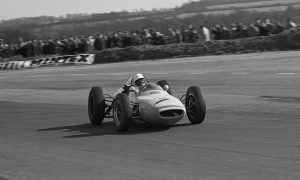
RED BULL’S LOWER KEY UPGRADE
Perhaps the expectations were too high for Red Bull ahead of Barcelona. The Milton Keynes-based outfit did not introduce a ‘B’-spec version of the RB13 but a revised challenger with updates in key areas instead.
The most noticeable evolution is the revamped bargeboard. Almost too conventional in its original design, it is now more complex, in the same vein as what the competition has been doing.
The three-element setup has gained an extra horizontal winglet. The main rectangular plane has been extended to start from the suspension mounting points, which has resulted in the removal of the deflector that used to line up with the turning vanes (see orange arrow).
Basically, the bargeboard fulfils two needs. First, it serves as a flow conditioner, driving away the dirty wake of the front wheels. Otherwise, the turbulent air would disrupt the air flowing on the upper face of the diffuser, thus limiting its efficiency. Secondly, the component is also a vortex generator that produces two vortices (a lower vortex and an upper one), while also interacting with the Y250 vortex.

MONKEY ON A BULL
Just like Mercedes, Red Bull added a monkey seat to its charger, having trialled the element during the post-Bahrain Grand Prix test.
The monkey seat assists the rear wing in preventing the stall phenomenon. How so? It creates a depression zone above the exhaust, which sucks the gasses upwards and guides them under the rear wing. These gasses will then help the air flowing under the wing to stay attached to it.
That way, the rear wing can work in a stable manner at a high angle of incidence, which is necessary to generate aerodynamic load. And one knows how much of a performance factor downforce is around the fast, sweeping curves of Circuit de Barcelona-Catalunya.

LET’S GO AND SEE THE LOUVRE
The RB13’s rear wing featured an extra louvre in the upper endplate. It should be remembered that the zones on each side of the endplate have different pressures: high on the inside, lower on the outside. The horizontal louvres allow the high-pressure air through the endplate and towards the low-pressure area.
This helps decrease the pressure differential, which in turn weakens the vortex generated at the joint area of the endplate and wing tip (see the yellow whirl) with the ultimate goal of reducing drag.







